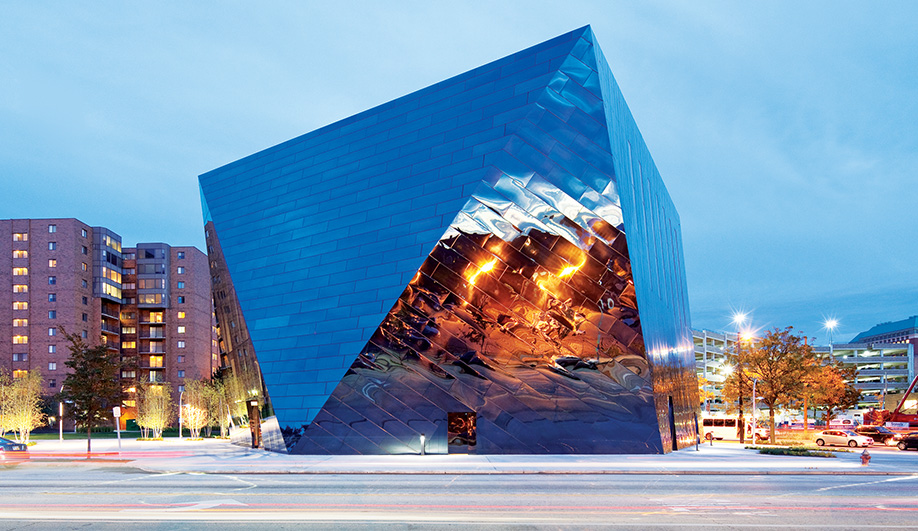
Opened in October 2012, Cleveland’s Museum of Contemporary Art is flourishing inside its new home, a shining black block at the edge of a plaza, in the cultural district of University Circle. Foreign Office Architects originally won the selection process to design a building with a strong identity as the institution’s first ground-up home, and Farshid Moussavi, director-in-charge at FOA, carried the project to completion after the firm split up in 2011. Constructed for $18.7 million, MOCA revels in the frugality of its exposed steel frame and raw concrete floors.
What catches the eye at once is the skewed geometry. Hexagonal in plan and rectangular at the top, the four-storey, 3,160-square-metre structure has a multi-planar facade of tilted triangles and trapezoids, which is clad in a running bond pattern of Rimex panels, made of black stainless steel with a mirror finish. This material, along with the long diagonal bands of windows and the one fully glazed wall, catches the changing light, reflects the surroundings and refracts sunlight across the public plaza, designed by James Corner Field Operations. Within, the frame that supports the walls is painted midnight blue, subverting the conventional white cube of the standard art museum. Contributing to this sense of dynamism, the café’s glass wall opens up to the plaza, and its counter, as well as the caster-mounted sales units in the museum store, roll back to make space for receptions, complementing the double-height event space.
Surprisingly, the interior’s most striking gestures are its most utilitarian. A staircase with a balustrade of white steel plates zigzags upward within a void, taking museum-goers on a vertical promenade through the building, with views over the classrooms, offices and workshop. The long-span fourth-floor gallery, whose sharply angled geometry resembles a suspended sculpture, doubles as a social condenser. Fully enclosed and tucked beneath it, the obligatory fire stair provides an alternate route up and down, its yellow interior immersing visitors in a colour field. “Public buildings need to offer a multiplicity of choices,” says Moussavi. “Good architecture has an artistic dimension, and the staircases deliver an aesthetic experience beyond their functional purpose.”
